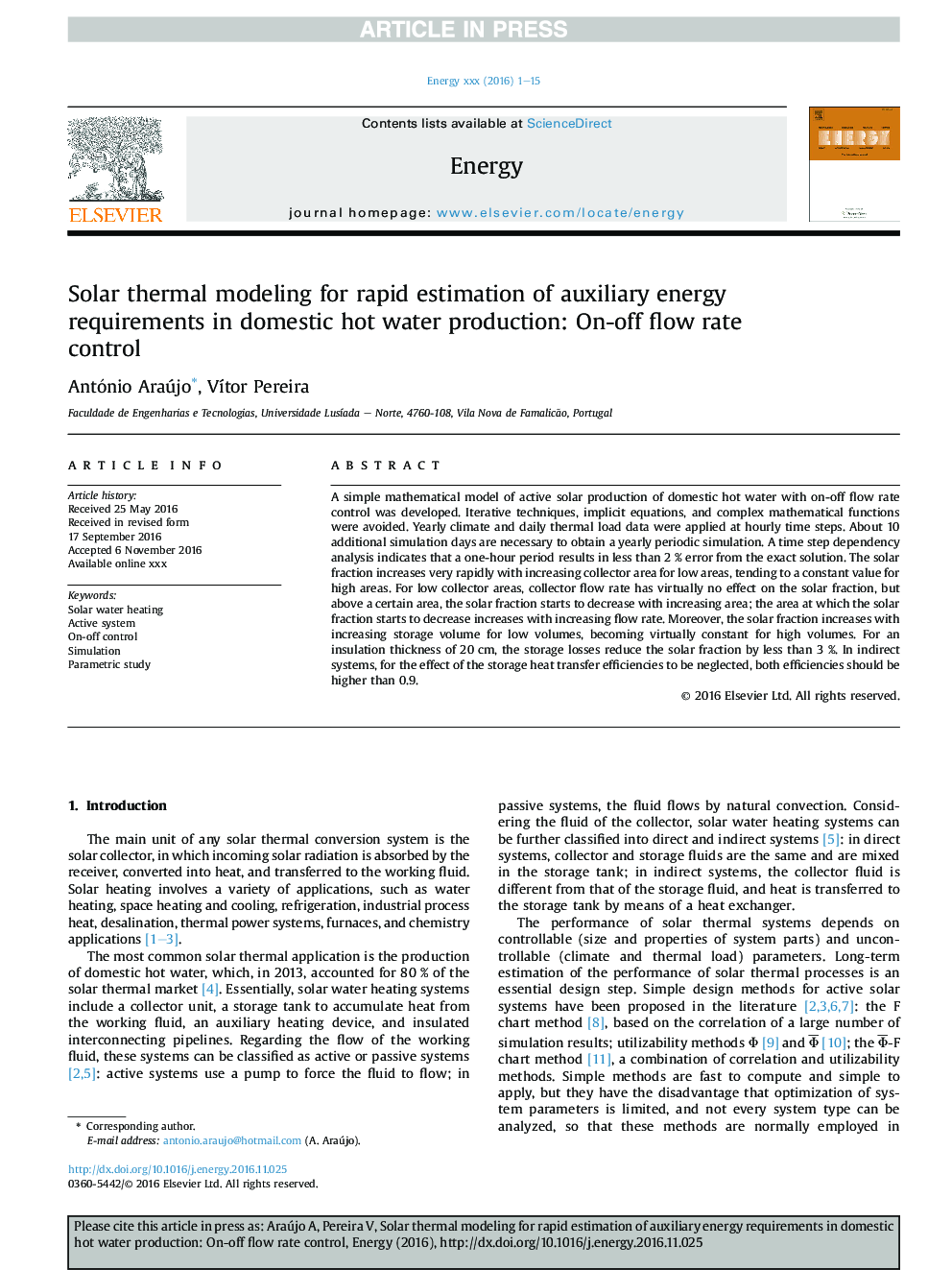| Article ID | Journal | Published Year | Pages | File Type |
|---|---|---|---|---|
| 5476912 | Energy | 2017 | 15 Pages |
Abstract
A simple mathematical model of active solar production of domestic hot water with on-off flow rate control was developed. Iterative techniques, implicit equations, and complex mathematical functions were avoided. Yearly climate and daily thermal load data were applied at hourly time steps. About 10 additional simulation days are necessary to obtain a yearly periodic simulation. A time step dependency analysis indicates that a one-hour period results in less than 2 % error from the exact solution. The solar fraction increases very rapidly with increasing collector area for low areas, tending to a constant value for high areas. For low collector areas, collector flow rate has virtually no effect on the solar fraction, but above a certain area, the solar fraction starts to decrease with increasing area; the area at which the solar fraction starts to decrease increases with increasing flow rate. Moreover, the solar fraction increases with increasing storage volume for low volumes, becoming virtually constant for high volumes. For an insulation thickness of 20Â cm, the storage losses reduce the solar fraction by less than 3 %. In indirect systems, for the effect of the storage heat transfer efficiencies to be neglected, both efficiencies should be higher than 0.9.
Related Topics
Physical Sciences and Engineering
Energy
Energy (General)
Authors
António Araújo, VÃtor Pereira,
